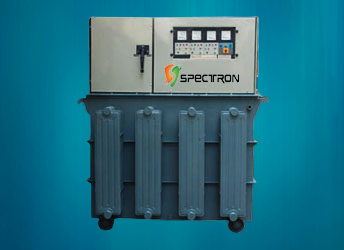Single Phase Servo Voltage Stabilizer
A single-phase servo voltage stabilizer is an electrical device used to regulate and stabilize the voltage of a single-phase power supply. It is designed to maintain a constant output voltage regardless of changes in the input voltage or load current.
A single-phase servo voltage stabilizer typically consists of an autotransformer, a buck-boost transformer, a voltage regulator, and a servo motor. The autotransformer is used to step up or step down the voltage as needed, while the buck-boost transformer is used to provide additional voltage regulation.
The voltage regulator controls the output voltage by adjusting the position of the servo motor. This is done by monitoring the output voltage and comparing it to a reference voltage. If the output voltage is too low, the voltage regulator will increase the position of the servo motor, and if the output voltage is too high, the voltage regulator will decrease the position of the servo motor.
Single-phase servo voltage stabilizers are commonly used in applications where stable and reliable power is required, such as in homes, offices, and small businesses. They can help to protect equipment from damage due to overvoltage or under voltage, and can also improve the efficiency and performance of electrical equipment.
One advantage of a single-phase servo voltage stabilizer is that it can provide fast and accurate voltage regulation, with response times as low as a few milliseconds. However, it should be noted that they are generally more expensive than other types of voltage regulators, and may not be suitable for high-power applications.





